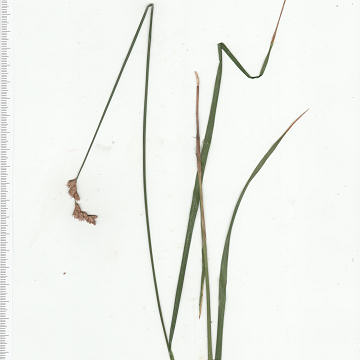

Carex projecta - (image 1 of 5)
Taxonomy
Family: Cyperaceae
Section Ovales
Synonymous with Carex tribuloides var. reducta
Habitat
Moist woods, streams banks, swamps, thickets.
Associates
Distribution
Newfoundland to Manitoba, south to WV, IL, and MO.
Morphology
Tufted perennial, aphyllopodic; stems stout, to 1 m; sheaths ventrally green-veined nearly to the summit; leaves 3-7 mm wide, shorter than the stems; spikes 5-15, gynaecandrous, subglobose to obovoid, 5-8 mm, distinct and often well-separated below in a flexuous inflorescence to 5 cm long; perigynia mostly 15-30, lanceolate, ascending-spreading, dull brown, 3-5 mm long, less than 1/3 as wide, the wing gradually narrowed from the middle to the base, distinctly nerved dorsally, obscurely nerved ventrally; scales evidently narrower and shorter than the perigynia; achene lenticular; stigmas 2.
Notes
Fruiting June to July
Wetland indicator: FACW
Closely related to C. tribuloides which has longer spikes (8-12 mm) that are overlapping and crowded with more than 30 perigynia per spike. Specimens of C. scoparia might key to this species is some of the perigynia are not winged below the middle, but it has leaves that are always less than 3 mm wide. The inflorescence is similar in appearance to C. tenera, but it has ovate perigynia that are winged to the base.
References
Curtis, L. 2006. Woodland Carex of the upper Midwest. Lake Villa, IL.
Gleason, Henry A. and A. Cronquist. 1991. Manual of Vascular Plants of
Northeastern United States and Adjacent Canada. Second Ed.
The New York Botanical Garden. Bronx, NY
Swink, F. and G. Wilhelm. 1994. Plants of the Chicago Region.
Indiana Academy of Science. The Morton Arboretum. Lisle, Illinois.
|
© Michael Hough 2010 |